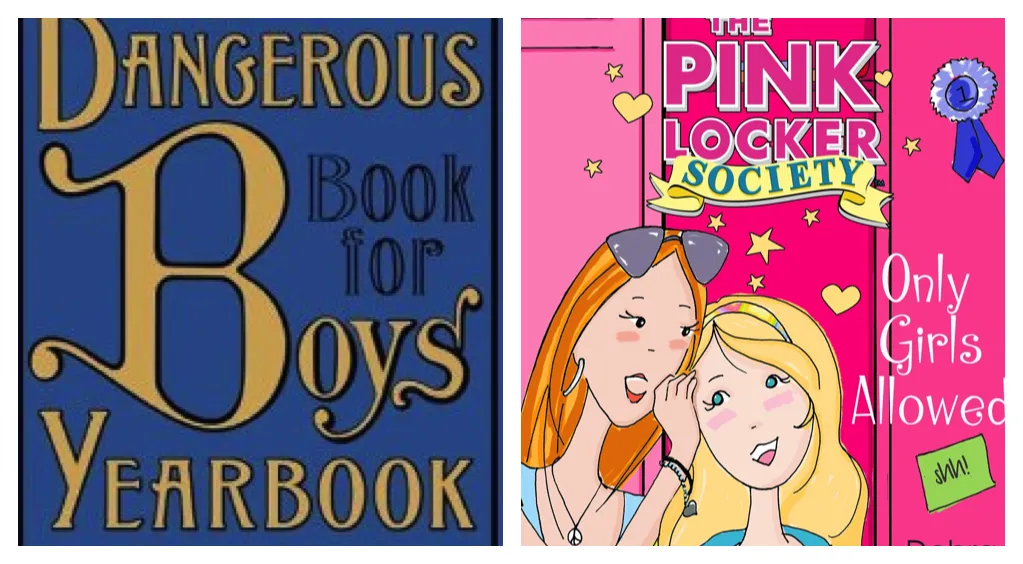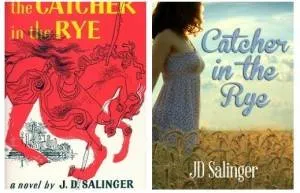
Books for Boys and Books for Girls: Problems with Gendered Reading
We can be our own worst enemies when it comes to teaching kids how to love reading.
We tell boys — yes, we tell boys — that they don’t like to read. That reading is something not for them. It starts at the top with us as adults and as gatekeepers (librarians, teachers, any adult who has the ability to impact the life of a child). We talk about things we do and don’t see in our world, and we frame it in the simplest, most easy-to-grasp manner. We don’t see boys reading in front of us? Well, boys must not be readers. If boys aren’t readers, what is it that we can do to make sure they become readers?
We build seminars about getting boys to read. We talk about the problems of “too many girls” in children’s literature (which is a false statement). We build boys their own designated spaces in libraries (“boy caves,” if you will). We develop book lists and talk about books “for boys,” including comic books, graphic novels, adventure stories, nonfiction, and sports books. We do this because boys have so many other things competing for their interests and why would they stop and want to read? They don’t have an internal life to fill.
Those last words aren’t mine or just any random person’s on the internet with an opinion. They belong to a well-known YA author.
When we buy into these ideas about boys and reading, we also make a statement about girls and reading. We believe they’re automatically readers. They don’t need our support or encouragement to be life-long readers because reading is part and parcel of being a girl. Their lives are small, internal. That their interests aren’t in non-fiction or sports books or comics and graphic novels. But we send a mixed message here, since girls should be insulted by the idea that they’re interested in anything “girly,” too.
Those last words aren’t mine or just any random person’s on the internet with an opinion. They belong to a well-known, well-respected YA author.
Gender and reading made a huge splash in the internet book communities this summer, with Maureen Johnson’s #coverflip experiment. The intentions behind the project were more than worthwhile. Still, the discussion that continues to ensue around it is highly problematic for one reason. It’s the same reason noted above.
“Girly.”
Since when is a girly cover or a book with girly content — by which people mean pink covers, frilly dresses, make up, shoes, and stories that might be heavier on romance and love or that are “easier” to read and less focused on being deep, heavy Literature — bad? When we pass judgment on books that we deem “girly” by calling them “girly” or suggesting that anything girly is lightweight or inconsequential, we pass judgment on to the readers. We tell them that their interests and preferences don’t matter. And because those readers frequently are girls, we continue to impress upon them that they and their desires are lesser.
On one breath, we tell boys that they don’t have an internal life to fulfill and then we tell anyone — boys or girls — who like things that are “girly” that their internal lives don’t matter. We tell boys they’re special snowflakes who need extra attention in order to find things to read because they should be doing any number of other more exciting things with their time. We tell girls that they don’t have external lives and, more frequently, that their interests don’t matter. That their status as a gender is a pejorative. We tell boys they are the hero in all stories and offer them examples of stories where this plays out; boys act in adventures. We tell girls to be flexible, that their status as a hero isn’t guaranteed. Girls need to enjoy the adventure, whether they’re the heroine or, more often than not, watching from the sidelines (or are not a part of the story at all).
Those who claim kid lit is filled with nothing but stories about girls and girly things are not only wrong, but they fail to think about the books taught to children in school and the books awaiting these readers as adults. They read the classics, of which the vast majority are written by males about an experience through the eyes of a male. It prepares them for the world of adult fiction, which is filled with far more male authors writing about experiences through the eyes of a male (see The New York Times Bestsellers List or the New York Times Book Review). Books falling outside of that can easily be denigrated as “chick lit.” Which, aside from being offensive on the level of how it defines a female author or a story with a female lead, is even more offensive to those readers who find their reading love within the kinds of stories which really are “chick lit.”
We make anything a girl is interested in ugly both through our use of the word “girly” as a curse and through our unwillingness to recognize that those tastes and interests in reading are legitimate. We also tell boys who share these interests they’re inferior, both because boys should like only certain types of reading experiences AND because the ones that they do have an interest in are “girly.”
And we don’t need boys being girly, do we?
It would be wildly naive to suggest we can combat these messages entirely, especially because there’s some truth to the suggestion that boys have a harder time reading (how much truth is debatable — we hype the idea up in the media, which then we impress upon boys who will wire that message internally and begin believing and acting upon it themselves). But if we acknowledge these messages, we take a first step. We take a second and a third step when we talk to each person as a reader who comes to their reading world with their own interests and passions and we help connect them with the book that fits them perfectly. Rather than turn a reader away from a book with a “girly” cover or content that’s not action-driven-comic-non-fiction-sports, we let the reader tell us what he or she wants and we do the heavy lifting to make the right match for them. The more we expose young readers to the wide variety of reading possibilities, the wide variety of how books look and feel and grow in our hands and minds, the more positive steps we take in combating gendered reading.
Maybe while we’re at it, we also stop writing about “books for boys” and “books for girls.”
Books are for readers.
____________________________
Sign up for our newsletter to have the best of Book Riot delivered straight to your inbox every two weeks. No spam. We promise.
To keep up with Book Riot on a daily basis, follow us on Twitter, like us on Facebook, , and subscribe to the Book Riot podcast in iTunes or via RSS. So much bookish goodness–all day, every day.











